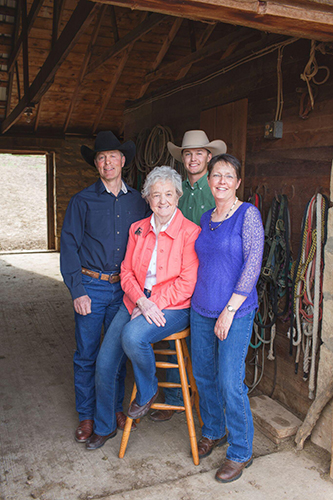 “Take care of the land and it will take care of you” has become the family’s ranching philosophy. David’s father and grandfather deeply believed in leaving the land in better shape than where it started, and David has passed down that ethic to his children.
“Take care of the land and it will take care of you” has become the family’s ranching philosophy. David’s father and grandfather deeply believed in leaving the land in better shape than where it started, and David has passed down that ethic to his children.
Prior to the Kanes’ development of water pipelines, many areas of the ranch were unusable due to the lack of water. The Kanes have installed several miles of pipeline throughout the ranch, allowing for more even cattle grazing in the pastures and providing a supplemental source of water for wildlife. Initially powered by gas, the water well pump jacks on the ranch have been converted to solar, significantly reducing the cost of fuel and maintenance.
The ranch hosts several notable species of wildlife such as trophy mule deer, elk, sharp-tail grouse, Hungarian partridge and antelope. Many of the Kanes’ management practices have been targeted towards improving forage production. In the early nineties, Kanes switched from using chemicals to controlled burns to improve the rangeland. Coupling this with the water developments, a significant increase in forage production and residual on the land has benefitted the livestock and wildlife.
Leafy spurge was once a problem on the ranch, however David implemented a flea beetle program to combat the weed. He has managed the problem by establishing insectary sites and flea beetle populations for collection and distribution. Since leafy spurge is not an uncommon problem in the area, David has encouraged his neighbors to begin their own flea beetle programs to combat the pesky plant.
"The Kane family is an excellent example of land stewardship and conservation on a working family ranch,” said Andrew Cassiday, NRCS District Conservationist, Sheridan County. “The management of their cattle business demonstrates that a family ranch can achieve high end conservation benefits through superior grazing management and infrastructure improvements, thus ensuring productive landscapes and abundant wildlife."
 Sign In
Sign In
 Sign In
Sign In
